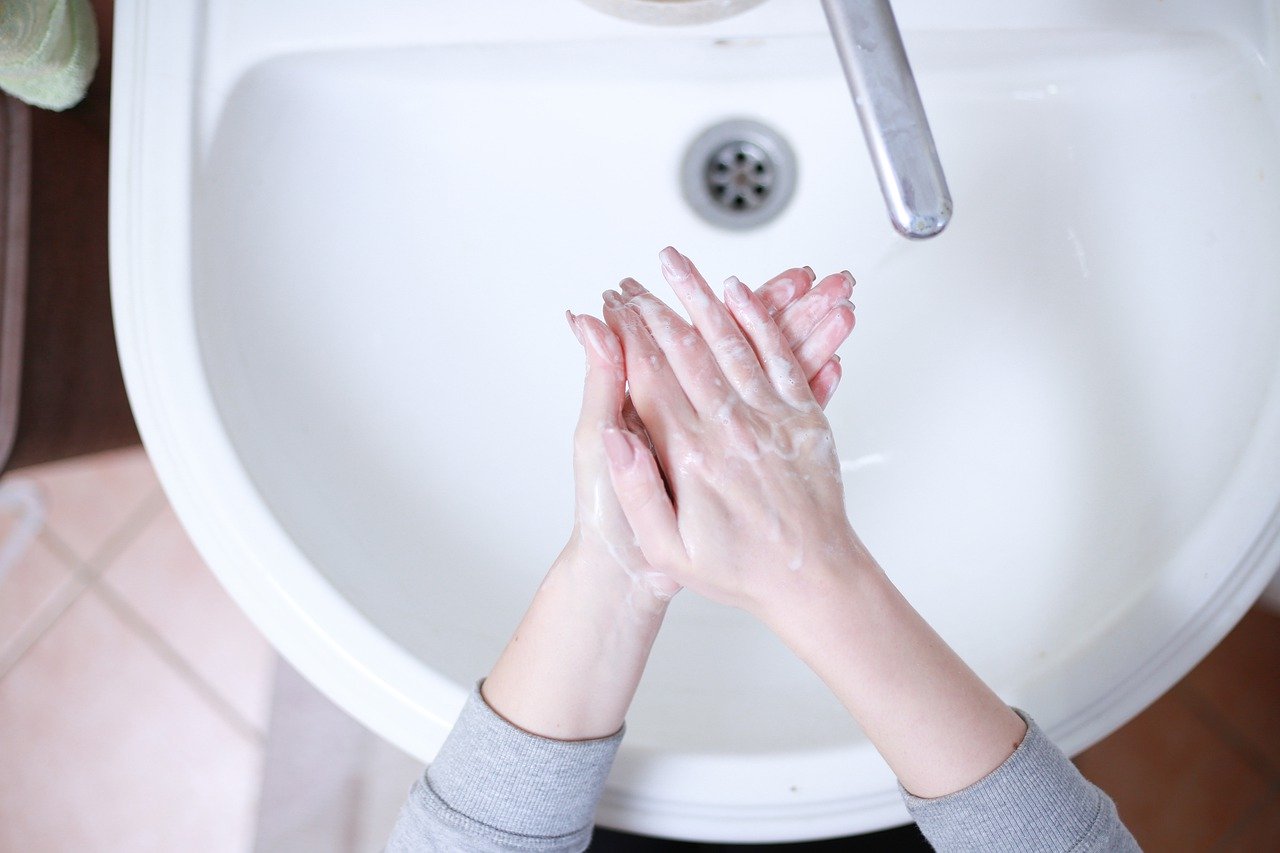
As a parent, you can’t help but worry about the safety of your children. So, it’s natural that as stories about the novel coronavirus (COVID-19) and recent cases in the San Francisco Bay Area come out, parents worry about whether their children could be at risk.
Dr. Julia Getzelman of GetzWell Pediatrics is sharing the facts as well as her advice on keeping our families healthy. The good news is that currently young children appear to be less at risk than older adults, and about 80% or more of healthy adults without other existing chronic health conditions who become ill with COVID-19 can expect relatively mild sickness.
What is COVID-19?
COVID-19 is the most recently discovered coronavirus which causes respiratory illness. It’s also sometimes referred to as 2019 Novel Coronavirus, 2019-nCoV, or SARS-coV-2. Coronaviruses are a large family of viruses that can cause illness in animals or humans. Their name comes from the crown-like spikes on their surface (“corona” is Latin for “crown”). At first glance, coronaviruses are unremarkable; they’re common among animals, and in humans cause illnesses similar to the common cold, which are usually not severe. Coronaviruses have one trait that makes them particularly hard to contain: they’re zoonotic, meaning they have the ability to jump between animals and humans, which appears to be the source of COVID 19. In humans, coronaviruses can cause respiratory infections that are mild, like the common cold, as well as a more severe disease like SARS (Severe Acute Respiratory Syndrome) and MERS (Middle East Respiratory Syndrome).
How does COVID-19 spread?
Our current understanding of how COVID-19 is transmitted is based on what we know about how other coronaviruses are transmitted. The virus is thought to spread mainly from person-to-person, between people who are in close contact with one another (within about 6 feet). When an infected person coughs or sneezes, the respiratory droplets that are produced can land in the mouths, noses, or eyes, or be inhaled by people nearby. It’s also likely that a person could get COVID-19 by touching an object or surface that has the virus on it and then touching their own mouth, nose or eyes. Hand-shaking is also risky behavior, so consider an elbow bump or hand to heart as a safer alternative. Authorities are emphasizing “social distancing,” meaning when possible stay at least 6 feet away from others. The incubation period for the virus is believed to be around 2-14 days and the most recent data suggest 5-6 days post-exposure is when symptoms most often begin. It appears that those who are infected but asymptomatic are unwittingly able to infect others, which limits the ability of public health tools to contain its spread.
What are the symptoms?
The symptoms of COVID-19 are a lot like a cold or the flu, including a fever, dry cough, fatigue, and shortness of breath. In the WHO report released after studying the outbreak in China, only 4.8% of those infected had runny noses. The CDC states that for confirmed cases illness severity has ranged from mild to severe, and even death. With such a wide range of possible outcomes, it’s no wonder that this virus has captured our attention.
How do you test for COVID-19?
The test is basically done as a q-tip swab of the nose and/or throat. The test is NOT available in primary care offices, and GetzWell does NOT have these tests. They are available only in certain locations, including certain Public Health Laboratories. There are now more options for testing than even a week ago and turnaround times are rapidly shortening. Some tests can currently be turned around in just 1-2 days (down from 3-4 days).
If your child has cold or flu-like symptoms, contact us so that we can give you specific, personalized advice. Don’t risk exposing your child or yourself to other viruses by visiting a hospital or public health clinic unnecessarily. Keep in mind that it is significantly more likely that your child has a cold or the flu than COVID-19. And remember that regardless of the illness, we’re here to support you and your child as they recover.
How do you treat it?
There is no specific treatment for COVID-19. Rest, hydration, as well as more intensive care if needed, are ways to support recovery. The bottom line is this: we’re all around germs every day and nobody wants to get sick. So, what are our best defenses? And how do we boost our immunity?

Common-Sense Prevention: Hand (and Nose!) Washing
- Wash Your Hands: Good hand washing with plain old soap (not the antibacterial stuff) and water is a common-sense measure that will help keep everyone healthy. Try singing songs (3 rounds of “Row, Row, Row Your Boat,” for example) with your little ones to teach them how long they need to spend washing. Send your big kids back for a do-over if they just wave their hands through running water, slide them down the fronts of their jeans and call it done.
- Try Nasal Washes: One of the MOST preventive things you can do is to irrigate your and your children’s nasal passages at the end of every day, and after any exposure (at work, school, playgroups, on BART/buses/planes, etc.). In addition to regular hand washing, daily and frequent nose washing (you can’t overdo it) is one of the most important things that you can do to protect against influenza and other viral infections. After a viral exposure, germs need to multiply in the nasal passages for at least 1-2 days before any symptoms develop. Nasal irrigation can wash away viral particles before they have the opportunity to take hold, and thereby prevent many infections from happening in the first place!
Immunity Superchargers
- Sleep: Our bodies need adequate sleep to do their work and keep us healthy. When we don’t get enough sleep, we are more susceptible to illness.
- Relaxation/Stress Reduction: Stress causes the body to produce greater levels of the stress hormone cortisol, and over the long term, elevated cortisol can weaken our immune system, leaving us more vulnerable to everything from the common cold to autoimmune diseases. Stress can also leave us depressed and anxious. Consider committing to a consistent meditation or yoga practice to boost your immunity. In addition to helping you feel more rested and centered, your example might even inspire your children to begin meditating.
- Vitamin D3: Researchers have hypothesized that rates of illness increase during winter months because of widespread vitamin D deficiency given short days and little sunlight. Supplementation with vitamin D3 during the cold and flu season can significantly lower rates of infection. Vitamin D3, among other things, increases the body’s production of cathelicidin, which is an antimicrobial. The Vitamin D Council recommends a maintenance dosage of 1000 IU of Vitamin D3 for every 25 pounds of body weight, but we prefer to customize our vitamin D recommendations by testing our patients.
- Fish Oil: While not specifically shown to prevent cold and flu, omega-3 essential fatty acids generally support a healthy intestinal tract and immune system and provide other long term benefits.
- Probiotics: Many studies have shown reductions in episodes of upper respiratory infections in those taking probiotics. This study showed a drastic reduction in fever and upper respiratory symptoms in children who took probiotics.
- Vitamin C: Studies on vitamin C’s role in helping colds/flu have been mixed. However, it is indisputable that vitamin C is a powerful antioxidant.
- Zinc: Zinc is essential for white blood cells to function normally. Just 10-15 mg of zinc per day can be key in warding off infection. Here are some good food sources of zinc.
- Elderberry: Elderberry has been used for hundreds of years to boost immunity during cold and flu season and modern studies are confirming its effectiveness. Taking a high-quality elderberry syrup daily during flu season or drinking elderberry tea is delicious and may help maintain health during the winter months.
- Oscillococcinum: A homeopathic medicine that not only treats but may help to prevent, influenza infection. Safe for use at any age, taking the contents of one small tube per week for cold and flu prevention is good practice. It can also be used if there is a known viral exposure: put the contents of one tube under the tongue immediately following any exposure!
The information on this website is not intended or implied to be a substitute for professional medical advice, diagnosis, or treatment. All content, including text, graphics, images, and information, contained on or available through this website is for general information purposes only. Always seek the advice of your physician or other qualified health care provider with any questions you may have regarding a medical condition or treatment and before undertaking a new health care regimen. Never disregard professional medical advice or delay in seeking it because of something you have read on this website.




















